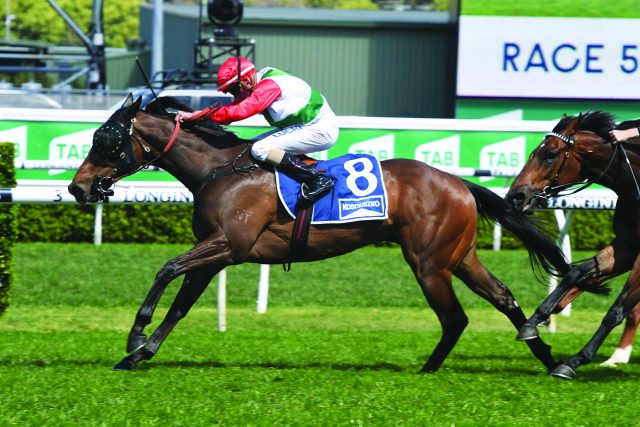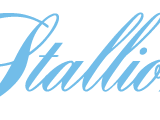Going racing with his hobby trainer Dad in outback Queensland more than 60 years ago ignited Keith Dryden’s love of the thoroughbred and set him on a course that sees him “still learning” at the age of 73. The Canberra-based trainer had his biggest payday when Handle The Truth won the inaugural running of the $1.3m The Kosciuszko in October.
OSCAR Wilde once said, “Experience is one thing you can’t get for nothing”. It is a quotation Canberra-based trainer Keith Dryden would agree with wholeheartedly.
Keith, who began training on a part-time basis 37 years ago, had the richest payday of his career last October when Handle the Truth won the inaugural running of the $1.3m ATC The Kosciuszko. Brought with a perfectly timed finishing run by Nash Rawiller the Star Witness gelding then defied late bursts by Victorem and Bobbing to score. The result was a $685,000 windfall for Handle The Truth’s slot holders, his owners and the Dryden stable.
 “It was brilliant to see so many people happy and excited after the race,” said Keith, who would later hold a combined The Kosciuszko celebration and Christmas party at his Capital Racing Stables at Canberra’s Thoroughbred Park. The victory was also a tribute to the expertise he has accumulated since he began working around racehorses with his father more than 60 years ago.
“It was brilliant to see so many people happy and excited after the race,” said Keith, who would later hold a combined The Kosciuszko celebration and Christmas party at his Capital Racing Stables at Canberra’s Thoroughbred Park. The victory was also a tribute to the expertise he has accumulated since he began working around racehorses with his father more than 60 years ago.
“One thing I have learned is that there are no short cuts in this business,” Keith said. “You have to do everything correctly and you need to be consistent, like feeding at the same time every day.” The effect of those factors and other criteria, such as always keeping the stable’s horses under restraint in their track work, has Keith thinking that at 73 he is “training better than he ever has”.
“That all comes from experience,” he said. “Although I’ve been training for a long time now, I keep learning all the time. The day I stop learning I will retire.”
His accomplishments as a trainer, combined with his straight talking, have earned him the respect of his peers throughout the industry. This was demonstrated in 1999 when he was appointed to the Canberra Racing Club committee as the representative of owners and trainers.
“I was the first licensed person to be appointed to any racing club board anywhere in Australia,” said Keith, who has nothing but praise for the CRC. “The race club has responded on every occasion we have made requests to continually make Thoroughbred Park an even better training facility. Now we have virtually everything you could want; from the main grass track, to a synthetic track, sand track, slow work track, community horse walkers and a heated swimming pool.”
It is a far cry from the days when he started helping his father Reginald with the horses he had in training on the track at Blackall, in central Queensland, nearly 1000km north-west of Brisbane. The Drydens had moved from the western Sydney suburb of Parramatta, where Keith was born, to Blackall after his father had bought a hotel in the town.
“Besides having the hotel my father would have four or five horses in work. I think I first sat on a horse when I was about six years of age. I can’t really remember, because I was only very young, but my father raced the horses around the area and that’s how I got started.”
The family “moved around a bit” and, after beginning his schooling at Blackall, they went to Caragabal, which is just over 400km west of Sydney. “I had a pony and my father was training a couple of horses. He’d take them to race at Grenfell, Cowra and around there and I’d go with him.”
The Drydens then moved to Murwillumbah in the far north east of New South Wales where Keith finished the formal part of his education. “I didn’t show a lot of interest in school,” he said. “When the teacher was throwing chalk at you every day you knew things weren’t going well.”
That led to Keith leaving at fifteen-and-a-half, “putting his age up a bit” and beginning to work in the Grazcos shearing sheds at Dubbo in central New South Wales. After about 18 months with Grazcos he re-joined his family, who had by then moved to Canberra.

“It was around the time Lake Burley Griffin was being constructed and there was plenty of work. My father met me at the airport at 11 o’clock and by two o’clock I had a job with Volkswagen as a trades help, on the mechanical side, before going into the customer services office. I had my driver’s licence by then and I’d take cars for a test drive after they’d been serviced.”
In 1966 Keith, who was playing rugby union for the Ainslie club, gravitated towards the training side of the industry by beginning to work for leading Canberra trainer Jack Gordon. “I began working around the stables at the weekends, driving the truck to the races and things like that. I soon realised I didn’t know much but I kept my eyes open and my mouth shut.”
He also started racing horses himself after being entrapped while enjoying a few beers. “We were in the pub one night when one of the boys said ‘a mate of mine is selling a horse today at the sales’ and by about nine o’clock I said I’d buy the horse, if it didn’t sell. When I woke up the next morning I thought I hope that horse sold, but about 11 o’clock I received a call saying the horse hadn’t sold. I asked how much was wanted and was told $1000, which was a bit of money in those days for a tried horse who had no form.”
Saddled with the horse Royal Vigil, the thoroughbred was put into very capable care of Jack Gordon and registered four wins and a second from five starts between November 6, 1971, and January 5, 1972. Royal Vigil went on to win another five races, which whetted Keith’s appetite for buying and racing horses. These later included Trysull and Ebonette, who were both by Burgess Point (GB). Trysull won 29 races, featuring the AJC Horsley Handicap (1000m) on July 1, 1978 while Ebonette won 11 races on the Southern Districts circuit.
Following the death of Jack Gordon, Geoff Bloom, who was to become Canberra Racing Club chairman four years later, suggested in 1982 Keith apply for a licence to train a horse named Kentucky Kingdom they had in partnership. By 1972 Keith had been in a position to buy a Ready Mix concrete truck, but that presented complications as far as training horses was concerned.
“I said that being at track work at four o’clock in the morning was no problem but that I might be caught up in the afternoons,” he said. “Geoff said if he was registered all I had to do was ring him whenever
I couldn’t make the stables in the afternoon and he would clean out the boxes and feed up.” Despite Keith’s best efforts Kentucky Kingdom did not manage to win a race. In fact there was quite a wait before the success, that has continued expanding to this day, came long.
“Neville Layt received his licence the same day as I did and within three weeks he’d trained his first winner,” Keith said. “But it took me more than 12 months to train my first winner.”
That came up at Canberra on April 23, 1984 with the Godavari (IRE) filly Monvari, who went on to win further races at Queanbeyan, Goulburn and Bungendore. As the winners began to flow Keith, who had more than 20 horses in his stable while training part-time, was able to sell the truck, at a hefty profit in 1988, and that year he turned to training full time.
Along the way several decent plunges had been landed, which also helped. Although one he remembers, with some chagrin, was on a Rebel God (GB) gelding named Quinburra Prince, who was backed from 25/1 to 7/2. That led to a bold newspaper headline declaring “Dryden Lands Massive Plunge” but the payment on the $100 Keith gave the owners to invest was just $450.
“Anyway we went on from there and Quinburra Prince won several races in Sydney. Another horse the same owners had was Carrido Prince. Malcolm Johnston used to ride him for me and he won several races in Sydney as well.
“It was after that when I stumbled on my first good horse when a gentleman, a thorough gentleman, in Arthur Menzies, who had horses with Jack Gordon, approached me at Gundagai races and said he had a horse for me to train. Arthur said, ‘It has a withered hip so if he has a problem send him home and I will give you another one’.”
That was Tumble On, a 1982 foal by Tumbledownwind (IRE) from the Kaoru Star mare Star Turn, who showed the hip was not a worry by winning 18 races, eight straight at one stage, and recording 11 placings from 45 starts. A winner of the AJC Villiers Stakes-Gr.2 in 1988, his other five wins in Sydney included the STC Royal Parma Stakes-LR and two successive runnings of the AJC Hall Mark Stakes-LR.
“He was a quality horse and I named my stables Tumble On Lodge after him, because he really set me going,” he said.
A series of capable performers went through Keith’s hands until his next star, appropriately named Into The Night, came along through an association with Louis Mihalyka, of Laurel Oak Bloodstock.
“Louis has virtually been with me since we started and was syndicating around the country in those early days,” he said. “Anyway he suggested we get a bank together to have a crack at a horse at the Magic Millions. Between us we put in $60,000 and said we’d buy something for about that price.
“I started a hunt and found a colt by Rhythm (USA), who was the leading two year-old sire in Japan, and Louis liked him as well. We decided to get him Brain Rated and he came back with a fantastic rating
so we thought we’d go after him with our $60,000.
“When the bid reached $60,000 I thought I’d have one more and went to $65,000, then it went to $70,000 and $75,000. At that stage I thought I’d have one more bid and went to $80,000 and he was knocked down
to me. I went back to Louis and he said, ‘I heard
it on the loud speaker, we didn’t get him’ and he was stunned when I told him I’d gone to $80,000. Two guys who had committed to be in the horse pulled out, but we still managed to put together the money within the month we had been given by Magic Millions.”
The youngster was from the Marscay mare Marshow and was appropriately named Into The Night by stable client Greg McAlister, who reasoned they would be celebrating into the night if the horse won a decent race. The ownership group did not have to wait long for a return on Into The Night, because he won at Canberra on his debut and then took the AJC Country Cash Final (1000m) at his third appearance.
In the spring of 2002 he scored in the STC Starlight Stakes-LR and VRC Hilton Stakes-LR and his efforts in the autumn included a fourth behind Belle du Jour, Bel Esprit and Super Impressive in the VRC Newmarket Handicap-Gr.1. At four he defeated Bomber Bill and Polygram in the QTC Cup-Gr.2 and was third to Private Steer and Diamond Dane in the Stradbroke Handicap-Gr.1. As a five year-old he won again at the Melbourne Cup Carnival, taking the VRC Century Stakes-LR, which led into a trip to Hong Kong where he contested the HK Sprint-Gr.1 (1000m), won by champion Silent Witness, but found the distance too short.
“He was a very good horse and we had some very enjoyable times with him,” Keith said. “We’ve had a lot of nice horses since.”
These included Coolroom Candidate, by Mister C (USA), who won an AJC Sapphire Stakes-Gr.2 and STC Research Stakes-Gr.3 and Testa Grande, by Testa Rossa, who won the Canberra RC Canberra Cup-LR in 2008. The first of four Canberra Trainers’ Premierships came Keith’s way in 2011-12 after John Morrisey, who had a powerful group of owners behind him, had previously won the title on 22 consecutive occasions.
In 2015 wanting to ease his burden and spend more time at Narooma where he and partner Trish Buchanan have a holiday house, Keith entered into a training partnership with Goulburn-based trainer Scott Collings. The pair worked well together but last year Scott just found it impractical to move his family to the national capital so they each, amicably, decided to again go their own way.
“We are still good friends and Scott is doing pre-training for me,” said Keith, who now has another “nice” horse in Handle The Truth. That is also a story involving Louis Mihalkya and Laurel Oak Thoroughbreds. Handle The Truth, who is by Star Witness from the Bernadini (USA) mare Assertively, had a parrot mouth and was not considered ready for the yearling sales when Louis secured him.
“Louis sent him down, I had him broken in and I’d sold about 50% in him before I let him rip-up one morning,” Keith says.
“I looked at the clock and couldn’t believe what I saw, so I let him rip up a week later. That made me realise the horse went pretty good and I told Louis.
“I then sent a message out saying Laurel Oak was syndicating the horse and that I believed he could be a city class. He was fully sold, or so we thought, within 24 hours.”
Then his former wife Annette, who remains firm friends with Keith and works in the office, discovered only 99% of Handle The Truth had been syndicated so she took the remaining one per cent. Annette quickly regained her investment when the gelding scored at Wagga at his first start and followed that with victories at Goulburn and in two TAB Highways in Sydney. There were further wins in the ATC Canterbury Night Sprint Series and Rosehill Bowling Club Handicap but as The Kosciuszko was beginning to take shape there was little or no interest, in him.
Then one morning there was a call from a representative of the Shellharbour TAB, which had won a slot in the ballot, inquiring about Handle The Truth and negotiations were completed with Louis.
“Most of the 19 shareholders in the Shellharbour syndicate were senior citizens, so it meant a lot to them to win The Kosciuszko and I have some great memories from that day,” Keith said. “One lady, from the TAB, posted on Facebook the morning after the race that she was going to visit her solicitor to change her will to include Keith Dryden and Nash Rawiller, which was a lovely gesture.” n



